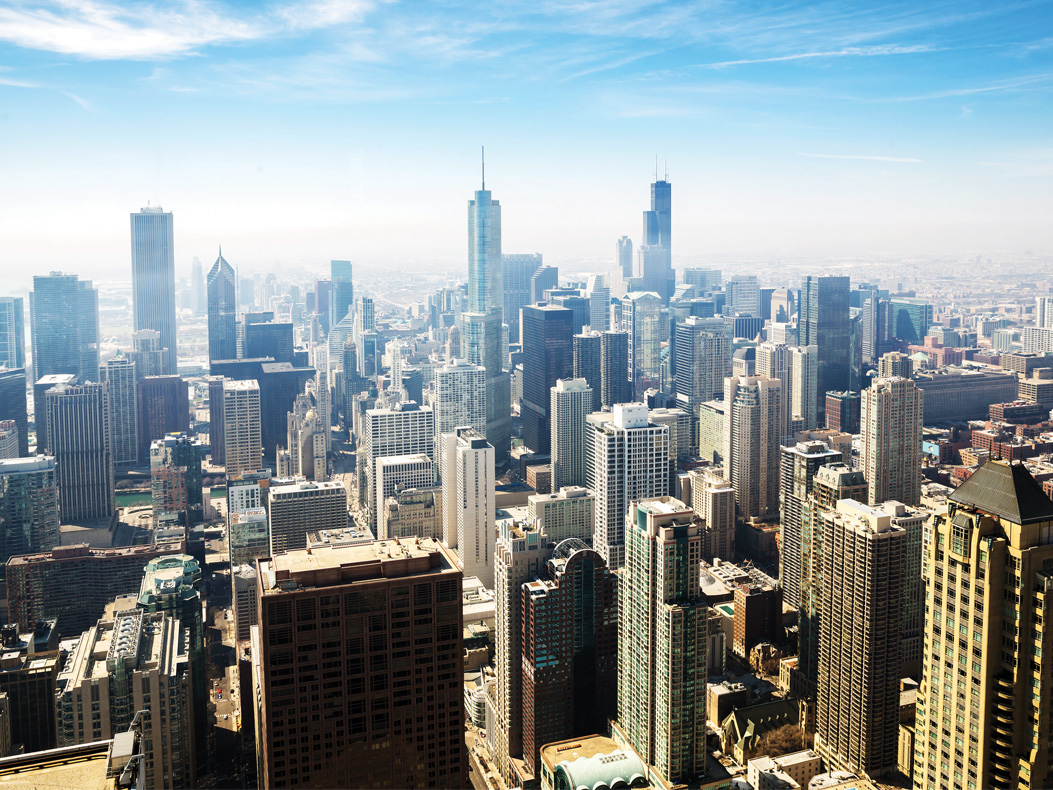Vertical Living Trends in Metro Cities
Read latest blogs and articles from Housystan

The Information mentioned here was last updated on:
11/12/2025Vertical Living Trends in Metro Cities
Rise of Vertical Living
In the ever-evolving landscape of metro cities around the world, vertical living is gaining traction as an effective response to increasing urban density. As cities continue to swell with the influx of residents seeking better opportunities, real estate developers and city planners are looking skyward for smart solutions. This shift towards vertical development is reshaping not only skylines but also the way people live and interact within urban spaces.
- Verified Tenants/Buyers
- Unlimited Property Listing
- Zero subscription/charges fee
What is Vertical Living?
Vertical living refers to residing in high-rise residential buildings, such as skyscrapers and multi-story apartment complexes. It is characterized by homes stacked atop one another, often featuring shared amenities and services designed to enhance the residents’ quality of life. High-rise living is becoming increasingly common in cities where space is at a premium, offering a practical solution to housing shortages and affordability issues.
Benefits of Vertical Living
1. Efficient Use of Space: With limited land availability in major cities, building upwards is one of the most efficient ways to maximize space. By concentrating housing within a limited footprint, more people can be accommodated in a given area without the need for urban sprawl.
2. Convenience and Accessibility: High-rise buildings in metro cities often feature integrated amenities like gyms, swimming pools, gardens, and shopping centers, which reduce the need for commuting long distances for daily needs. This accessibility makes for a more convenient lifestyle.
3. Environmentally Friendly: Vertical living can lead to a reduced carbon footprint. With denser populations in a smaller area, public transportation becomes more feasible and effective, reducing reliance on cars. Further, modern high-rises often incorporate green technologies such as energy-efficient appliances, rainwater harvesting, and solar panels.
4. Community Living: These buildings are designed to foster a sense of community. Shared spaces such as terraces, lounges, and recreational areas encourage social interaction among residents, helping to build a friendly neighborhood atmosphere within the confines of a tower.
Challenges of Vertical Living
While the advantages are numerous, vertical living does come with its own set of challenges:
1. Privacy Concerns: With many families living closely packed together, issues around noise and privacy can arise. While modern construction techniques mitigate sound transmission to some extent, the proximity of neighbors is always a factor to consider.
2. High Cost of Living: Although vertical living can provide affordable options, especially in terms of space utilization, luxury high-rise apartments with premium amenities can come with a hefty price tag. Maintenance costs for facilities like elevators, security, and common areas may also contribute to higher living expenses.
3. Longer Evacuation Times: In emergencies such as fires or earthquakes, high-rise buildings can present significant evacuation challenges. Design and safety regulations in many countries require comprehensive safety measures, but the perception of risk can still deter some potential residents.
4. Limited Outdoor Space: Residents used to having a backyard may find vertical living restrictive due to limited private outdoor space. Developers counter this by designing rooftop gardens and balconies, but these are no replacement for the expansiveness of ground-level outdoors.
Vertical Living in Popular Metropolitan Areas
New York City
New York City, known for its iconic skyline, pioneered vertical living as far back as the 19th century. With a dense population and a limited land area, the city is a classic example of why and how vertical living works. Skyscrapers like the Empire State Building and modern residential towers in areas such as Manhattan illustrate how the city has leveraged height to manage space constraints.
Singapore
Singapore’s approach to vertical living is innovative, integrating nature with urban spaces. The country's Housing and Development Board (HDB) flats provide functional and affordable vertical housing to a significant portion of its population. Features like the Sky Habitat in Bishan incorporate lush gardens to offer a "city in a garden" experience.
Mumbai
Mumbai, one of India's most populous cities, is rapidly adopting vertical living to address its burgeoning population. Despite challenges like narrow streets and old infrastructure, new skyscrapers are transforming the city. Residential areas like Worli and Parel showcase some of the tallest towers, including One Avighna Park and Lodha The Park.
The Future of Vertical Living
As urban populations continue to increase, the demand for high-rise buildings is projected to grow, spurring advancements in design and technology. Future trends in vertical living may include:
1. Smart Buildings: Integration of Internet of Things (IoT) technology for enhanced convenience and energy management. For example, systems that optimize electricity and water use based on real-time data.
2. Vertical Agriculture: Incorporating urban farming within residential towers to sustainably produce food locally and reduce reliance on external supply chains.
3. Mixed-Use Developments: A further push towards integrating residential, commercial, and recreational spaces within a single vertical structure, enhancing the live-work-play ecosystem.
4. Advanced Building Materials: The use of sustainable and innovative materials to construct safer, more resilient, and environmentally friendly buildings that can withstand natural disasters and the demands of urban life.
Global Perspectives
Globally, cities are adopting vertical living as a solution tailored to their unique challenges. In Europe, cities like London and Paris, while more conservative in building height compared to Asian or American cities, are gradually embracing taller residential structures to address housing shortages. Meanwhile, Shenzhen and Hong Kong have embraced skyscrapers as a defining feature of their urban identity.
Vertical living symbolizes a shift towards more sustainable, efficient urban planning. As technology and design continuously evolve, it's becoming clear that the future of city living involves going up rather than out, making the best use of the limited space we have. This trend holds great promise for accommodating growing populations, minimizing urban sprawl, and reinventing community living in metro areas worldwide.